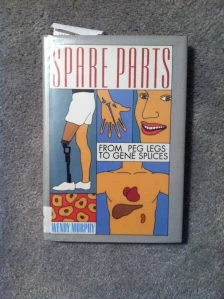As we continue with booklists I have put together over the years, today we turn to modern times, that is, everything after WWII until the year 2000. I have arranged these by topic, roughly chronologically.
Living Books on the Post-WWII Era to 2000
The Cold War
Caddis, John Lewis. The Long Peace. Teens.
Foster, Leila. The Story of the Cold War. From the Cornerstones of Freedom series (be sure to get the older books in this series which begin “The Story of . . .”). Elementary.
Marrin, Albert. Marrin is my favorite author for middle and high school. On this era he has: Stalin: Russia’s Man of Steel, Time of Fear: America in the Era of Red Scares and Cold War, and Mao Tse-Tung and His China. Teens.
Miller, Arthur. The Crucible. A classic drama, set in the Salem witch trials but written during the McCarthy hearings. Teens.
Mirabile, Lisa. The Berlin Wall. Middle years.
Seuss, Dr. The Butter-Battle Book. Read it even with older kids to discuss how an arms race gets started and escalates. Elementary +.
The Civil Rights Movement
Adler, David. Picture Book of Martin Luther King and Picture Book of Rosa Parks. Elementary.
Birtha, Becky. Grandma’s Pride. Elementary.
de Angeli, Marguerite. Bright April. Middle years.
De Leeuw, Adele. Barred Road. Middle years-Teens.
Harrington, Janice. Going North. Elementary.
McKissack, Patricia. Abby Takes a Stand. Elementary.
Swift, Hildegard. North Star Shining. Poetry.
JFK & LBJ
Appelt, Kathi. Lady Bird’s Wild Flowers. Elementary.
Foster, Leila. The Story of the Great Society. From the Cornerstones of Freedom series. Elementary.
McConnell, William. Living through the Cuban Missile Crisis. First-hand documents. Middle years-teens.
Stein, R. Conrad. Cuban Missile Crisis: In the Shadow of Nuclear War. Middle years.
Vinton, Iris. The Story of President Kennedy. A good older author if you can find her books. Middle years.
Vietnam
Bunting, Eve. Wall. Elementary.
Garland, Sherry. The Lotus Seed. Elementary.
Hyunh, Quang Nhuong. The Land I Lost and Water Buffalo Days. Elementary.
Kent, Zachary. The Story of the Saigon Airlift. From the Cornerstones of Freedom series. Elementary.
Marrin, Albert. America and Vietnam: the Elephant and the Tiger. Teens.
Myers, Walter Dean. A Place Called Heartbreak. Middle years.
Wartski, Maureen. A Boat to Nowhere. Middle years.
Whelan, Gloria. Goodbye, Vietnam. Middle years.
Chinese Cultural Revolution
Compestine, Ying Chang. Revolution is not a Dinner Party. Middle years.
Nixon & Watergate
Bernstein, Carl and Bob Woodward. All the President’s Men. Teens. We watched the movie version starring Robert Redford with middle aged kids.
Buchwald, Art. “I am Not a Crook”. Political satire. I read portions aloud to my teens.
Hargrove, Jim. The Story of Watergate. From the Cornerstones of Freedom series. Elementary.
Carter & Iran Hostage Crisis
Farber, David. Taken Hostage. Middle-teens.
Holt, Willis. When Zachary Beaver Comes to Town. Set in 1970’s Texas. Middle years.
Kapuscinski, Ryzard. Shah of Shahs. Middle-teens.
Lawson, Don. America Held Hostage. Iran Hostage Crisis and the Iran-Contra affair. Teens.
Mattson, Kevin. What the Heck are you up to, Mr. President? The story of a speech Carter gave. Teens.
Stead, Rebecca. When You Reach Me. Set in 1970’s NYC. Middle years.
Stein, R. Conrad. The Iran Hostage Crisis. Middle years.
The Reagan Years and the Fall of Communism.
Harvey, Miles. The Story of the Fall of the Soviet Union. From the Cornerstones of Freedom series. Elementary.
Kort, Michael. The Rise and Fall of the Soviet Union. Middle-teens.
Matthews, John R. The Rise and Fall of the Soviet Union. Decent. Middle years.
Nardo, Don. Cause & Effect: the Fall of the Soviet Union. Decent, not great. Middle years.
The 1990s
Kallen, Stuart A. The 1990s: Decade in Photos: The Rise of Technology and A Cultural History of the United States through the Decades: the 1990s. More for pictures and cultural history than anything else.
McEvoy, Anne. Fashions of a Decade: the 1990s. Again, we mostly used it for the pictures.
Hurricane Katrina
Herlong, M.H. Buddy. It is not the finest writing but I really loved this book. Middle years.
Philbrick, Rodman. Zane and the Hurricane. Middle years.
Miscellaneous
Hosseini, Khaled. Kite Runner. Afghanistan covering roughly 1960-2000. Adult content.
Miller, Debra, ed. Miller has edited a lot of books on modern topics that are not too long and seem decent. Examples include: Pakistan, The Iranian Green Movement, The Tea Party Movement, Modern-Day Piracy, and many, many more.








